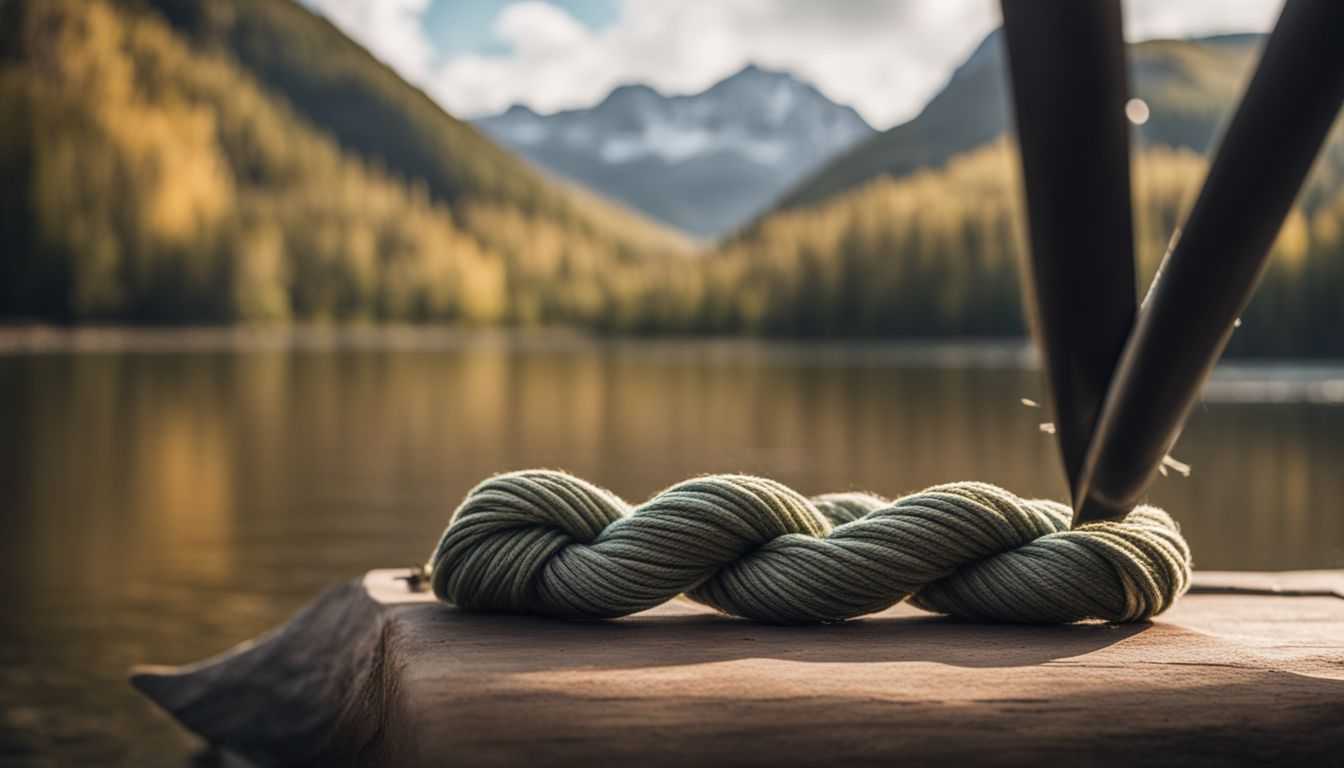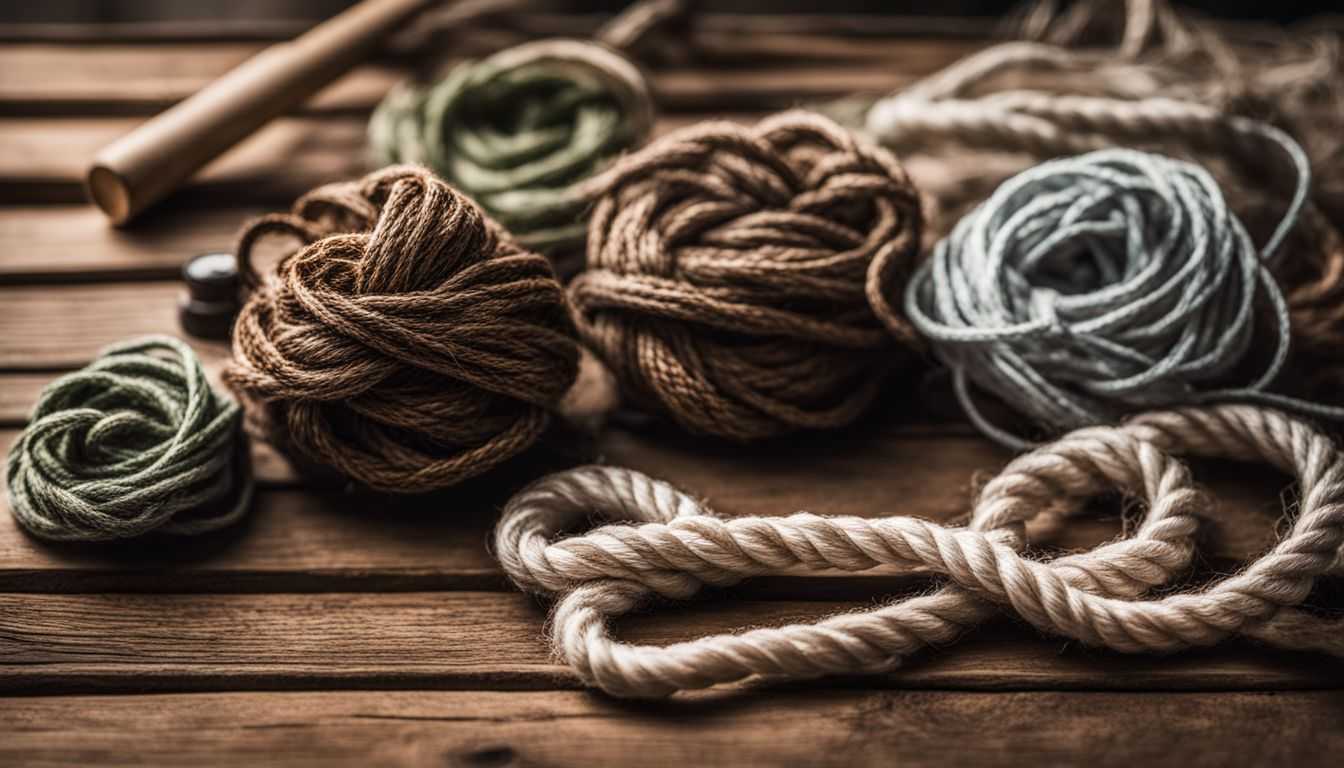Do you struggle with tying the perfect fishing knot? You’re not alone, a lot of anglers find this skill challenging. This article contains step-by-step guides on easy-to-tie fishing knots that will improve your angling experience.
Intrigued? Dive in to master the art of knot-tying!
Key Takeaways
- Mastering fishing knots is important for anglers because it increases the chances of catching fish and prevents losing bait and lures.
- The article provides step-by-step guides on how to tie essential fishing knots such as the Improved Clinch Knot, Palomar Knot, Turle Knot, Blood Knot, Double Surgeon’s Loop, Wire Line to Mono Knot, Tucked Sheet Bend, and Snelling a Hook.
- Practice regularly to improve knot tying skills, keep the line taut while tying knots for strength, and use wet hands for easier knot tying in wet weather conditions.
The Importance of Knowing Basic Fishing Knots

Basic fishing knots play a key role in catching fish. If you tie a strong knot, your chances of hooking the fish go up. It also secures your fishing line to get ready for the battle with the fish.
A weak knot can cause you to lose both your bait and lure.
Tying different knots helps adapt to various fishing situations. That’s where mastering basic fishing knots comes in handy! The Uni Knot is a simple yet versatile one that beginners should learn first.
Don’t forget, using solid angling skills along with good knot tying makes you successful at sport fishing faster.
Step-by-Step Guide to Tying the Following Knots:

In this section, we will provide you with a step-by-step guide on how to tie the most essential fishing knots.
Improved Clinch Knot
Let’s talk about the Improved Clinch Knot. This is a common knot used in fishing. Anglers tie it when they need to attach their fishing line to a hook, swivel, or lure. Here are the steps to tie this knot:
- First, put the line through the eye of the hook.
- Then, bring the line back.
- Next, do five or more loops around the standing line.
- Pull on the tag end of your fluorocarbon line next.
- Last step – tug it tight.
Palomar Knot
The Palomar Knot is a simple but strong fishing knot. It is perfect for tying fishing hooks to your line. Here are the six easy steps to tie it:
- Make a small loop at the end of your fishing line.
- Thread the tag end through the eye of your hook.
- Pass the loop over your hook.
- Tie an overhand knot with the looped end.
- Pull on both ends of the line to secure it tightly.
- Trim off any extra part beyond the knot.
Turle Knot
The Turle Knot is an important knot to know for anglers, especially those who enjoy fly fishing. It is used to attach a fly to a tippet in fly fishing. Here’s a step-by-step guide on how to tie the Turle Knot:
- Double the line back onto itself towards the fly.
- Bring the tag end of the line behind and through the loop created.
- Pass the tag end through the loop once more.
- Moisten the knot with water or saliva.
- Tighten the knot by pulling both ends of the line.
- It is considered to be a strong knot for securing a fly to a tippet.
- There are tutorials available online that provide diagrams, instructions, and animated videos on how to tie the Turle Knot.
- The Turle Knot can often be taught in angler education programs.
Blood Knot
The Blood Knot is an easy knot to tie for anglers. It is used to join two lines together, like a main line to a leader. This knot is also known as the double blood knot. The Blood Knot can connect fishing lines that are of similar sizes, such as different sections of a leader or tippet. It has been used in fishing for a long time and is considered a classic bend knot. To tie this knot, you cross the tag ends of each line to form an X before joining the ends together.
Double Surgeon’s Loop
The Double Surgeon’s Loop is a knot used in fly fishing to connect a leader to a main line or tippet to a leader. It is recommended when using Dacron backing on a fishing reel. To tie the double surgeon’s loop, create a loop with the doubled line and pass the loop through the knot.
Wire Line to Mono Knot
The Wire Line to Mono Knot is an important fishing knot for anglers. It is used to join two lines together, specifically wire line and monofilament. This knot is known for its strength and durability in fly fishing. Here are the steps to tie the Wire Line to Mono Knot:
- Fold back four inches of the wire line to form a loop.
- Insert the end of the mono line through the loop.
- Wrap the mono line around both strands of the wire line and itself for about six turns.
- Take the end of the mono line and thread it through the loop that was formed earlier.
- Moisten the knot with saliva or water.
- Slowly pull both ends of the lines to tighten the knot.
- Trim any excess tag ends.
Tucked Sheet Bend
The Tucked Sheet Bend is a versatile knot that can be used for joining ropes together. Here’s how to tie it:
- Start by crossing the end of one rope over the standing part of the other rope.
- Take the end of the first rope and tuck it under both parts of the second rope.
- Then, bring the end of the first rope back over itself, creating a loop.
- Pass the end of the first rope through the loop you just created.
- Finally, pull both ends of the ropes to tighten the knot securely.
Snelling a Hook
Snelling a hook is an important technique for anglers. Here’s how to do it:
- Run the fishing line through the hook eye and down the shank of the hook.
- Form a loop below the hook with the line.
- Use the Uni Knot to tie a snell knot.
- The snell knot ensures a strong and secure connection between the hook and the fishing line.
- Setting the hook properly is essential for catching more fish, and snelling a hook can help with this.
- Snelling a hook is considered one of the strongest fishing knots.
- It provides a reliable and secure connection between the hook and the fishing line.
Tips and Tricks for Mastering Fishing Knots
Practice consistently to improve your fishing knot skills, keeping the line taut and using wet hands for easier tying.
Practice makes perfect
Practice is the key to becoming a master at tying fishing knots. It might not be easy at first, but with continuous practice, your knot-tying abilities will improve. The more you practice, the better you will become at perfecting fishing knot skills.
So keep practicing and soon you will be able to tie knots with ease and precision. Remember, mastery of fishing knots comes through enhancing your knot-tying proficiency by polishing your abilities through regular practice.
Don’t give up! Keep practicing and soon you’ll be a pro at tying fishing knots like a true angler.
Keep the line taut
To properly tie fishing knots and ensure their strength, it is crucial to keep the line taut. By keeping tension in the line while tying the knot, you can prevent any slack or looseness that may compromise its integrity.
This also helps in achieving a secure and reliable knot that won’t slip or break when reeling in a fish. So remember, always make sure to maintain proper line tension throughout the knot-tying process for optimal results.
Use wet hands for ease
Wet hands can make tying fishing knots easier and more effective. When your hands are wet, it mimics the slipperiness of wet weather conditions, which is helpful for improving your skills in those situations.
Remember to have a towel or rag handy to dry your hands and the fishing line before tying knots in wet weather. This will prevent slipperiness and ensure a secure knot. Tying knots with wet hands also helps improve technique and dexterity, making it easier to handle the line.
So, practice knot tying with wet hands to prepare yourself for difficult situations in wet weather while out on the water.
Conclusion
In conclusion, mastering the art of tying easy fishing knots is essential for all anglers. The step-by-step guide provided in this article offers detailed instructions on popular knots like the Palomar knot and surgeon’s knot.
Remember, practice makes perfect, so keep practicing your knot tying skills to become a pro angler!
FAQs
1. How important is it to know different fishing knots?
Knowing different fishing knots is crucial for ensuring your line stays secure and doesn’t break when reeling in a fish.
2. What makes the easy fishing knot so effective?
The easy fishing knot is effective because it’s simple to tie and provides strong and reliable strength, making it less likely for your line to slip or untie while you’re fishing.
3. Can I use the easy fishing knot for any type of fishing line?
Yes, the easy fishing knot works well with most types of monofilament, fluorocarbon, and braided fishing lines commonly used in recreational angling.
4. Is there a specific step-by-step guide available for mastering the easy fishing knot?
Yes, the article “Mastering the Easy Fishing Knot: A Step-by-Step Guide” provides detailed instructions on how to tie the knot correctly with accompanying illustrations.
5. How can knowing and using the easy fishing knot improve my success as an angler?
Using a reliable and secure knot like the easy fishing knot ensures that your hook stays attached to your line during casts and fights with fish, increasing your chances of successfully landing more catches.
